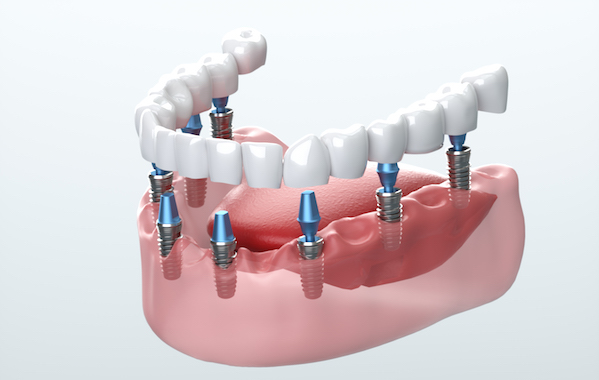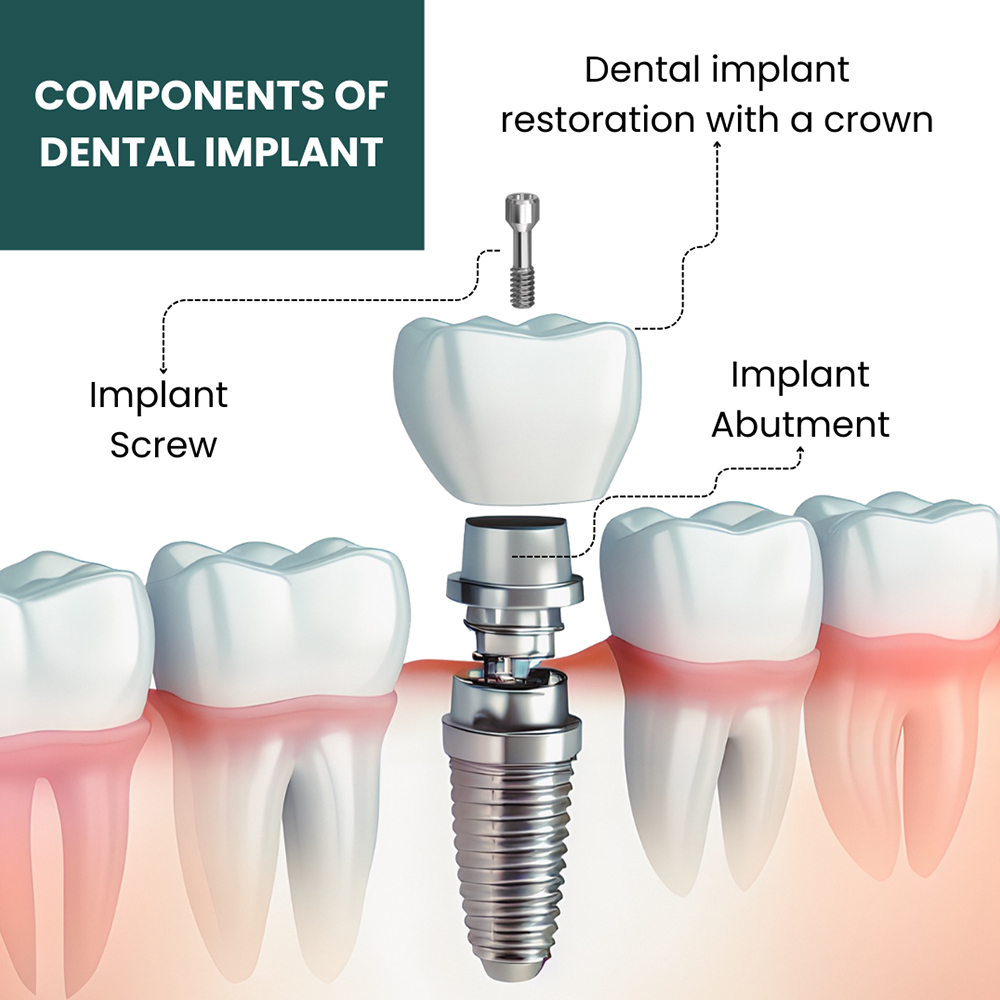5 Easy Facts About Dental Implants Explained
5 Easy Facts About Dental Implants Explained
Blog Article
The Main Principles Of Dental Implants
Table of ContentsIndicators on Dental Implants You Need To KnowDental Implants Things To Know Before You Get ThisAbout Dental ImplantsDental Implants Things To Know Before You Get This
are clinical devices surgically dental implanted right into the jaw to restore a person's ability to eat or their look. They offer assistance for fabricated (phony) teeth, such as crowns, bridges, or dentures. When a tooth is shed due to injury or illness, an individual can experience issues such as rapid bone loss, faulty speech, or adjustments to eating patterns that result in pain.
Structure of The Dental Implant System selecting dental implants, talk with your dental company concerning the prospective advantages and dangers, and whether you are a prospect for the procedure. Things to consider: Your general health and wellness is an essential variable in figuring out whether you are a good prospect for oral implants, the length of time it will certainly take to recover, and how long the implant may remain in area.
Cigarette smoking may affect the recovery process and reduce the lasting success of the dental implant. The healing procedure for the dental implant body may take several months or longer, throughout which time you generally have a short-lived abutment instead of the tooth. the oral implant treatment: Thoroughly adhere to the dental health instructions offered to you by your dental company.
Getting The Dental Implants To Work
Implant failing can lead to the demand for an additional surgery to repair or replace the implant system. Restores the capability to eat Recovers aesthetic appearance Assists maintain the jawbone from reducing as a result of bone loss Maintains the wellness of the bordering bone and gum tissues Aids maintain surrounding (close-by) teeth stable Boosts high quality of life Damage to surrounding natural teeth during dental implant positioning Injury to the surrounding tissues throughout surgical procedure, such as sinus perforation Injury during surgical treatment (for instance, crack of surrounding jawbone) Inadequate function, such as seeming like the teeth do not attack with each other generally A feeling that the tooth is loosened or twisting in position resulting from a joint screw loosening up Implant body failure (looseness of the dental implant body) as a result of systemic infection, which may be more probable in individuals with unrestrained diabetes due to regional infection in bone and gums sustaining the implant body due to postponed recovery, which might be most likely in patients who smoke Trouble cleaning the gums around the dental implant, causing poor oral hygiene Unattended periodontal condition Post-surgical feeling you can look here numb due to nerve impingement or damages Constantly alert health and wellness treatment carriers and imaging specialists that you have oral implants prior to any type of magnetic resonance imaging (MRI) or x-ray treatments.
FDA is not familiar with any kind of damaging occasions reported for MRI or x-ray procedures with oral implants. Oral implants systems are normally made of products that adhere to worldwide consensus standards of the International Organization for Standardization (ISO) or ASTM International. These criteria have information of what makes a safe product.
Various other products such as gold alloys, cobalt-based alloys, titanium alloys, or ceramic materials are often used. The safety and security profiles of these products are widely known. Dental dental implant systems are reviewed according to international consensus criteria. Biocompatibility screening, to show that bodily contact with the tool does not create issues like irritation or allergy, is part of the assessment that aids make certain the materials in the oral implant system are risk-free and do not trigger unfavorable impacts when dental implanted in individuals.

Dental Implants Can Be Fun For Anyone
Some people are not eligible weblink for dental implant surgical procedure. It is for dental doctors to operate individuals with: intense illnessuncontrollable metabolic diseasebone or soft tissue illness or infectionIf these problems are settled, an individual can have the surgical procedure. Dental Implants. In, oral surgeons avoid from running on individuals with: If individuals with any one of the above undergo oral implant surgical procedure, there is a higher risk of the implant stopping working
Some people have a jawbone abnormality that protects against adequate bone for a dental implant from establishing. In such situations, a specialist might require to carry out a ridge modification. This involves raising the periodontal to subject the area of deformed bone. The doctor will certainly then utilize a bone or bone substitute to repair and accumulate the area.
Dental dental implant surgical treatment you can check here is a personalized process. It's not the exact same for everyone. The adhering to provides a general review of what you can expect your dental practitioner, oral doctor, periodontist or prosthodontist to do: Position the implant surgically. Provide you time to heal. Attach the article and last crown, bridge or denture.
Next off, your specialist will thoroughly position the dental implant into your jaw. Lastly, your surgeon will certainly rearrange your periodontals and shut the incision with stitches. If your implant is near the front of your mouth, your dental practitioner will make a short-term tooth for you to put on up until you recover. In this way, you won't have a space in your smile while you recuperate.
Top Guidelines Of Dental Implants
Your company can tell you what to expect in your scenario. Throughout the recovery stage, your jawbone must fuse to the dental implant. This process, called osseointegration, is vital for security and long-lasting success. This process can take anywhere from three to nine months. In some instances, it may take longer.
As soon as your implant heals, your dental practitioner can connect the joint (tiny connector blog post) and your final remediation (crown, bridge or denture). This typically takes concerning one hour to complete and may call for a second small surgical treatment. You shouldn't feel any kind of pain during your dental implant procedure due to the fact that your company will use drug to numb your gums.
Report this page